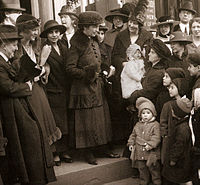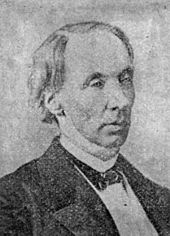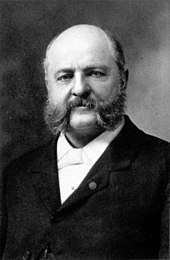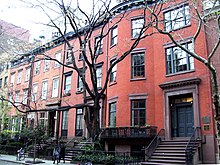Freedom of movement, mobility rights, or the right to travel is a human rights concept encompassing the right of individuals to travel from place to place within the territory of a country,
and to leave the country and return to it. The right includes not only
visiting places, but changing the place where the individual resides or
works.
Such a right is provided in the constitutions of numerous states, and in documents reflecting norms of international law. For example, Article 13 of the Universal Declaration of Human Rights asserts that:
Such a right is provided in the constitutions of numerous states, and in documents reflecting norms of international law. For example, Article 13 of the Universal Declaration of Human Rights asserts that:
- a citizen of a state in which that citizen is present has the liberty to travel, reside in, and/or work in any part of the state where one pleases within the limits of respect for the liberty and rights of others,
- and that a citizen also has the right to leave any country, including his or her own, and to return to his or her country at any time.
Common restrictions
Restrictions on international travel on people (immigration or emigration) are commonplace. Within countries, freedom of travel is often more limited for minors, and penal law can modify this right as it applies to persons charged with or convicted of crimes (for instance, parole, probation, registration).
In some countries, freedom of movement has historically been limited
for women, and for members of disfavored racial and social groups.
Circumstances, both legal and practical, may operate to limit this
freedom. For example, a nation that is generally permissive with respect
to travel may restrict that right during time of war.
Restrictions may include the following:
- national and regional official minimum wage tariff barriers to labour-market entry (free movement or migration of workers);
- official identity cards (internal passports, citizenship licenses) that must be carried and produced on demand;
- obligations on persons to register changes of address or of partner with the state authorities;
- protectionist local/regional barriers to housebuilding and therefore settlement in particular districts;
- trespassing into another individual's property.
Freedom of movement between private properties
In
some jurisdictions, questions have arisen as to the extent to which a
private owner of land can exclude certain persons from land which is
used for public purposes, such as a shopping mall or a park.
There is also a rule of law that a landowner whose property has no
public access can be awarded an easement to cross private land if
necessary to reach his own property. Conversely, public nuisance laws
prevent alternate use of public streets designated for public transit
from being used for block parties and playing basketball.
Parents or other legal guardians are typically able to restrict the movements of minor children under their care, and of other adults who have been legally deemed incompetent to govern their own movement. Employers may legally set some restrictions on the movements of employees, and terminate employment if those restrictions are breached.
Domestic restrictions
Governments
may generally sharply restrict the freedom of movement of persons who
have been convicted of crimes, most conspicuously in the context of
imprisonment. Restrictions may also be placed on convicted criminals who
are on probation or have been released on parole. Persons who have been charged with crimes and have been released on bail may also be prohibited from traveling. A material witness may also be denied the right to travel.
Governments sometimes also restrict access to disaster-stricken
areas, or to places where public health threats exist. Where an
individual presents a health threat due to infection with a contagious
disease, the government may quarantine that person, restricting their movement for the safety of others.
Though travelling to and from countries is generally permitted
(with some limitations), most governments restrict the length of time
that temporary visitors may stay in the country. This can be dependent
on country of citizenship and country travelled to among other factors.
In some instances (such as those of refugees
who are at risk of immediate bodily harm on return to their country or
those seeking legal asylum), indefinite stay may be allowed on humanitarian grounds, but in most other cases, stay is generally limited. One notable exception to this is the Schengen Area, where citizens of any country in the EU generally enjoy indefinite stay in other EU countries.
Furthermore, restrictions on the right to relocate or live in
certain areas of a country have been imposed in several countries, most
prominently China.
In a child custody
dispute, a court may place restrictions on the movement of a minor
child, thereby restricting the ability of the parents of that child to
travel with their child.
Entrance restrictions in certain countries
The British Government asks travelers arriving at London Stansted Airport not to destroy their travel documents, in order to be able to adjudicate their eligibility to enter the country
The Visa Restrictions Index
ranks countries based on the number of other countries its citizens are
free to enter without visa. Most countries in the world require visas
or some other form of entrance permit for non-citizens to enter their
territory.
Those who enter countries in defiance of regulations requiring such
documentation are often subject to imprisonment or deportation.
Exit restrictions in certain countries
Most countries require that their citizens leave the country on a
valid passport, travel document issued by an international organization
or, in some cases, identification document. Conditions of issuance and
the governments' authority to deny issuance of a passport vary from
country to country.
Under certain circumstances, countries may issue travel documents (such as laissez-passer) to aliens, that is, to persons other than their own citizens.
Having a passport issued does not guarantee the right to exit the
country. A person may be prohibited
to exit a country on a number of
reasons, such as being under investigation as a suspect, serving a
criminal sentence, being a debtor in default, or posing a threat to
national security. This applies to aliens as well.
In some countries prohibition to leave may take the form of revocation of a previously issued passport. For example, the United States of America may revoke passports at will.
Some countries, such as the former Soviet Union, further required that their citizens, and sometimes foreign travelers, obtain an exit visa to be allowed to leave the country.
Currently, some countries require that foreign citizens have
valid visas upon leaving the country if they needed one to enter. For
example, a person who overstayed a visa in Czech Republic may need to obtain an exit visa. In Russia,
the inconvenience goes even further as the legislation there does not
formally recognize residency permits as valid visas; thus, foreign
citizens lawfully residing in Russia need to obtain "exit-entry" visas
in order to do a trip abroad. This, in particular, affects foreign
students, whose original entry visas expire by the time they return
home.
Citizens of the People's Republic of China who are residents of the mainland are required to apply for exit and entry endorsements in order to enter the Special Administrative Regions of Hong Kong and Macau (and SAR residents require a Home Return Permit to visit the mainland). Since 2016, residents of the Xinjiang Uyghur Autonomous Region
have been required to deposit their passports with the police. Each
trip abroad must be approved by the government, which is more difficult
for members of the Uyghur ethnic group.
Saudi Arabia and Qatar require all resident foreigners, but not citizens, to obtain an exit visa before leaving the country.
History
Europe
When Augustus established the Roman Empire in 27 BC, he assumed monarchical powers over the new Roman province of Egypt and was able to prohibit senators from traveling there without his permission. However, Augustus would also allow more liberty to travel at times. During a famine in 6 AD, he attempted to relieve strain on the food supply by granting senators the liberty to leave Rome and to travel to wherever they wished.
In England, in 1215, the right to travel was enshrined in Article 42 of the Magna Carta:
- It shall be lawful to any person, for the future, to go out of our kingdom, and to return, safely and securely, by land or by water, saving his allegiance to us, unless it be in time of war, for some short space, for the common good of the kingdom: excepting prisoners and outlaws, according to the laws of the land, and of the people of the nation at war against us, and Merchants who shall be treated as it is said above.
In the Holy Roman Empire, a measure instituted by Joseph II in 1781 had permitted serfs freedom of movement. The serfs of Russia were not given their personal freedom until Alexander II's
Edict of Emancipation of 1861. At the time, most of the inhabitants of
Russia, not only the serfs but also townsmen and merchants, were
deprived of freedom of movement and confined to their places of
residence.
United Nations Declaration
After the end of hostilities in World War II, the United Nations
was established on October 24, 1945. The new international
organization recognized the importance of freedom of movement through
documents such as the Universal Declaration of Human Rights (1948) and the International Covenant on Civil and Political Rights (1966). Article 13 of the Universal Declaration of Human Rights, adopted by the U.N. General Assembly, reads,
- (1) Everyone has the right to freedom of movement and residence within the borders of each State.The text of the Universal Declaration of Human Rights.
- (2) Everyone has the right to leave any country, including his own, and to return to his country.
Article 12 of the International Covenant on Civil and Political Rights incorporates this right into treaty law:
- (1) Everyone lawfully within the territory of a State shall, within that territory, have the right to liberty of movement and freedom to choose his residence.
- (2) Everyone shall be free to leave any country, including his own.
- (3) The above-mentioned rights shall not be subject to any restrictions except those provided by law, are necessary to protect national security, public order (ordre public), public health or morals or the rights and freedoms of others, and are consistent with the other rights recognized in the present Covenant.
- (4) No one shall be arbitrarily deprived of the right to enter his own country.
The ICCPR entered into force for the initial ratifying states on 23
March 1976, and for additional states following their ratification. In
1999, the U.N. Human Rights Committee, which is charged with
interpreting the treaty, issued its guidelines for Article 12 of the
ICCPR in its "General Comment No. 27: Freedom of Movement".
While the treaty sets out the freedom of movement in broad and
absolute terms, part four of Article 12 of the ICCPR admits that these
freedoms may be restricted for a variety of reasons in the public
interest. This clause is often cited to justify a wide variety of
movement restrictions by almost every country that is party to it.[11]
Examples of free movement arrangements between countries
European Union
European Union Freedom-of-Movement Area
Within the European Union, residents are guaranteed the right to freely move within the EU's internal borders by the Treaty on the Functioning of the European Union and the European Parliament and Council Directive 2004/38/EC of 29 April 2004.
Union residents are given the right to enter any member state for up to
three months with a valid passport or identity card. If the citizen
does not have a travel document, the member state must afford them every
facility in obtaining the documents. Under no circumstances can an
entry or exit visa be required. There are some security limitations
and public policy restrictions on extended stays by EU residents. For
instance, a member state may require that persons register their
presence in the country "within a reasonable and non-discriminatory
period of time". In general, however, the burden of notification and
justification lies with the state. EU citizens also earn a right to
permanent residence in member states they have maintained an
uninterrupted five-year period of legal residence. This residency cannot
be subject to any conditions, and is lost only by two successive years
absence from the host nation. Family members of EU residents, in
general, also acquire the same freedom of travel rights as the resident
they accompany, though they may be subject to a short-stay visa
requirement. Furthermore, no EU citizen may be declared permanently persona non grata within the European Union, or permanently excluded from entry by any member state.
Workers
The freedom of movement for workers is a policy chapter of the acquis communautaire of the European Union. It is part of the free movement of persons and one of the four economic freedoms: free movement of goods, services, labour and capital. Article 45 TFEU (ex 39 and 48) states that:
- Freedom of movement for workers shall be secured within the Community.
- Such freedom of movement shall entail the abolition of any discrimination based on nationality between workers of the Member States as regards employment, remuneration and other conditions of work and employment.
- It shall entail the right, subject to limitations justified on grounds of public policy, public security or public health:
- (a) to accept offers of employment actually made;
- (b) to move freely within the territory of Member States for this purpose;
- (c) to stay in a Member State for the purpose of employment in accordance with the provisions governing the employment of nationals of that State laid down by law, regulation or administrative action;
- (d) to remain in the territory of a Member State after having been employed in that State, subject to conditions which shall be embodied in implementing regulations to be drawn up by the Commission.
- The provisions of this article shall not apply to employment in the public service.
Schengen Area
A different arrangement amongst 26 European countries, covers some
but not all European Union member states together with some non-member
states. The arrangement allows visa-free travel between the countries in
this area. A foreign national who holds a visa issued by any of these
countries can travel freely within the area.
Australia and New Zealand
The Trans-Tasman Travel Arrangement between Australia and New Zealand
allow citizens of each country to freely move between the two
countries. The arrangements also extend to holders of permanent resident
and resident return visas of Australia.
United Kingdom, Republic of Ireland, Isle of Man and Channel Islands
The Common Travel Area arrangements allow citizens of the United Kingdom and Republic of Ireland, and other British nationals resident in the Isle of Man and the Channel Islands,
to travel freely in this area. The arrangements also extend to certain
foreign nationals who hold visas issued by these countries.
Protection of right to freedom of movement in specific countries
Asia
Burma/Myanmar
The military regime in Burma has been criticized for allegations of restrictions to freedom of movement. These include restrictions on movement by political dissidents, women, and migrant workers.
China (mainland)
Hongping, Shennongjia District - within a section of Hubei province closed to foreign visitors
In the mainland of the People's Republic of China, the Hukou system of household registration makes internal migration difficult, especially for rural residents to move to urban areas. Many people move to places in which they don't have a local hukou, but local governments can restrict services like subsidized schooling, subsidized housing, and health insurance to those with local hukou. The system was used as far back as the Han Dynasty for tax collection, and more recently in the People's Republic to control urbanization.
The Hukou system has also lead many municipal governments to disregard
the welfare of migrant workers as measures of wellbeing and economic
progress are based almost exclusively on conditions for those with a
local hukou.
Also, Chinese citizens are allowed to go from the mainland to Hong Kong or Macau only for travel, but not for residence unless they obtain the "one-way permit' from Chinese authorities. Currently, the issuance of the "one-way permit" is limited to 150 per day.
The Tibetan Centre for Human Rights and Democracy claimed in 2000 that people in Tibet had to promise not to criticize the Chinese Communist Party before receiving official permission to leave for India or Nepal. Additionally, it alleged that people of Han descent in Tibet have a far easier time acquiring the necessary permits to live in urban areas than ethnic Tibetans do.
Hong Kong and Macau
As a part of the one country, two systems policy proposed by Deng Xiaoping and accepted by the British and Portuguese governments, the special administrative regions (SARs) of Hong Kong and Macau retained separate border control and immigration policies with the rest of the PRC.
Chinese nationals had to gain permission from the government before
travelling to Hong Kong or Macau, but this requirement was officially
abolished for each SAR after its respective handover. Since then,
restrictions imposed by the SAR governments have been the limiting
factor on travel.
Under Basic Law of Hong Kong
article 31, "Hong Kong residents shall have freedom of movement within
the Hong Kong Special Administrative Region and freedom of immigration
to other countries and regions. They shall have freedom to travel and to
enter or leave the Region. Unless restrained by law, holders of valid
travel documents shall be free to leave the Region without special
authorization."
India
- Freedom to move freely throughout the territory of India though reasonable restrictions can be imposed on this right in the interest of the general public, for example, restrictions may be imposed on movement and travelling, so as to control epidemics.
- Freedom to reside and settle in any part of the territory of India, which is subject to reasonable restrictions by the State in the interest of the general public, or for protection of the scheduled tribes because certain safeguards, as are envisaged here, seem justified to protect indigenous and tribal peoples from exploitation and coercion.
Israel
An internal Israeli checkpoint near the town of Bethlehem.
Israeli Basic Law: Human Dignity and Liberty,
which has quasi-constitutional status, declares that "there shall be no
deprivation or restriction of the liberty of a person by imprisonment,
arrest, extradition or otherwise"; that "all persons are free to leave
Israel"; and that "every Israeli national has the right of entry into
Israel from abroad".
In practice, "withhold departure from the country" orders are
liberally issued by Israel courts, including on non-custodial fathers
who are not in arrears in child support.
In March 2012 a corruption scandal exposed the quasi-legal reality of
Israeli passport control, as two officials were arrested for allegedly
having taken bribes to circumvent court ordered "no exit" travel abroad
bans.
Freedoms of movement in Israel are not similarly protected and a source
of much controversy in the Palestinian West Bank and, to a lesser
extent, Gaza Strip.
Japan
The Constitution provides for the freedom of movement within the country, foreign travel, immigration, and repatriation, and the Government generally respects them in practice.
Citizens have the right to travel freely both within the country and
abroad, to change their place of residence, to emigrate, and to
repatriate voluntarily. Citizenship
may be forfeited by naturalization in a foreign country or by failure
of persons born with dual nationality to elect citizenship at the
required age. The law does not permit forced exile, and it is not used.
Kuwait
Kuwait refuses admission to holders of Israeli passports as part of its boycott against Israel. In 2015 Kuwait Airways cancelled its route between New York and London following a decision by the U.S. Department of Transportation that the airline had engaged in discrimination by refusing to sell tickets to Israeli citizens.
Direct flights between the US and Kuwait are not affected by this
decision as Israeli citizens are not allowed to enter Kuwait.
North Korea
Travel to North Korea is tightly controlled. The standard route to and from North Korea is by plane or train via Beijing. Transport directly to and from South Korea
was possible on a limited scale from 2003 until 2008, when a road was
opened (bus tours, no private cars). Freedom of Movement within North
Korea is also limited, as citizens are not allowed to move around freely
inside their country.
Syria
Syrian citizens are prohibited from exiting the country without special visas issued by government authorities.
The Syrian Constitution
states "Every citizen has the right to liberty of movement within the
territory of the State unless prohibited therefrom under the terms of a
court order or public health and safety regulations.". In its mandated report on human rights to the United Nations,
Syria has argued that because of this constitutional protection: "in
Syria, no laws or measures restrict the liberty of movement or choice of
residence of citizens".
Legislative Decree No. 29 of 1970 regulates the right of foreigners to
enter, reside in and leave the territory of Syria, and is the
controlling document regarding the issuance of passports, visas, and
diplomatic travel status. The document specifically states "The latter
provision is intended merely to ensure that our country is not the final
destination of stateless persons."
However, Syria has been criticized by groups, including Amnesty International
for restrictions to freedom of movement. In August 2005, Amnesty
International released an "appeal case", citing several freedom of
movement restrictions including exit restriction without explanation,
refusal to issue passports to political dissidents, detention,
restriction from entering certain structures, denial of travel
documents, and denial of nationality. The United Nations Human Rights Committee issues regular reports on human rights in Syria, including freedom of movement.
There are certain restrictions on movement placed on Women, for
example Syrian law now allows males to place restrictions on certain
female relatives. Women over the age of 18 are entitled to travel
outside of Syria, however a woman's husband may file a request for his
wife to be banned from leaving the country.
From July 2013, in certain villages in Syria (namely Mosul, Raqqu and
Deir el-Zour), ISIS no longer allow women to appear in public alone,
they must be accompanied by a male relative/guardian known as a mahram.
Palestine
Palestinians queue to pass through a checkpoint between neighborhoods in the city of Hebron.
The restriction of the movement of Israelis and Palestinians in Israel and the West Bank by Israel and the Palestinian National Authority is one issue in the Israel-Palestine conflict. In the mid-1990s, with the implementation of the Oslo Accords and the division of the West Bank into three separate administrative divisions,
Israeli freedom of movement was limited by law. Israel says that the
regime of restrictions is necessary to protect Israelis both in Israel
proper and in the West Bank.
Checkpoints exist throughout and at entrances and exits to the
West Bank that limit the movement of non-Israelis on the basis of
nationality, age, and sex among other criteria. While many such checkpoints are static, many are random, or move around frequently. Full closures of the West Bank to any entrance or exit are frequent, generally taking place on Jewish Holidays.
Residents of Gaza are only allowed to travel to the West Bank in
exceptional humanitarian cases, particularly urgent medical cases, but not
including marriage. It is possible to travel from the West Bank to Gaza
only if the person pledges to permanently relocating to Gaza. Gazan
residents are only admitted to Israel in exceptional humanitarian cases.
Since 2008, they are not allowed to live or stay in Israel because of
marriage with an Israeli. Israelis who want to visit their partner in
Gaza need permits for a few months, and Israelis can visit their
first‐degree relatives in Gaza only in exceptional humanitarian cases.
Africa
Freedom
of movement laws and restrictions vary from country to country on the
African continent, however several international agreements beyond those
prescribed by the United Nations govern freedom of movement within the African continent. The African Charter on Human and People's Rights Article 12 outlines various forms of movement-related freedoms. It asserts:
- Every individual shall have the right to freedom of movement and residence within the borders of a State provided he abides by the law.
- Every individual shall have the right to leave any country including his own, and to return to his country. This right may only be subject to restrictions, provided for by law for the protection of national security, law and order, public health or morality.
- Every individual shall have the right, when persecuted, to seek and obtain asylum in other countries in accordance with laws of those countries and international conventions.
- A non-national legally admitted in a territory of a State Party to the present Charter, may only be expelled from it by virtue of a decision taken in accordance with the law.
- The mass expulsion of non-nationals shall be prohibited. Mass expulsion shall be that which is aimed at national, racial, ethnic or religious groups.
The ideals of the Charter are, in principle, supported by all
signatory governments, though they are not rigorously followed. There
have been attempts to have intellectuals recognized as having special
freedom of movement rights, to protect their intellectual ideals as they
cross national boundaries.
Beyond the African Charter on Human and People's Rights, the Constitution of South Africa also contains express freedoms of movement, in section 21 of Chapter 2.
Freedom of movement is guaranteed to "everyone" in regard to leaving
the country but is limited to citizens when entering it or staying in
it. Citizens also have a right to a passport, critical to full exercise of the freedom of movement internationally.
Europe
Ireland
In the Republic of Ireland, the Thirteenth Amendment was adopted in November 1992 by referendum in order to ensure freedom of movement in the specific circumstance of a woman traveling abroad to receive an abortion. However, with the successful repeal of the Eighth Amendment of the Irish Constitution on the 25th of May 2018, which ensures the right to an abortion, this previous amendment is no longer necessary.
Italy
In Italy, freedom of movement is enshrined in Article 16 of the Constitution, which states:
"Every citizen has the right to reside and travel freely in any
part of the country, except for such general limitations as may be
established by law for reasons of health or security. No restriction may
be imposed for political reasons. Every citizen is free to leave the
territory of the republic and return to it, notwithstanding any legal
obligations."
The Svalbard area is an entirely visa-free zone.
Norway (Svalbard)
Uniquely, the Norwegian special territory of Svalbard is an entirely visa-free zone under the terms of the Svalbard Treaty.
Poland
Polish
nationals holding dual citizenship are required to use Polish travel
documents (a Polish passport or, within the European Union, a Polish National ID card (Dowód osobisty) while travelling in the Schengen Area.
Poland requires all Polish citizens (including foreign citizens
who are, who can be claimed to or are suspected to hold Polish
citizenship) to enter and depart Poland using Polish travel documents.
Russia
The Russian Constitution
in article 27 states that "1. Everyone who is lawfully in the territory
of the Russian Federation has the right to freely move and choose a
place of stay or living. 2. Everyone may freely exit the territory of
the Russian Federation. [Every] citizen of the Russian Federation may
return onto the territory of the Russian Federation without hindrance."
Freedom of movement of Russian citizens around the country is
legally limited in a number of situations, including the following:
- In closed cities (mainly nuclear research centers) and border-adjacent areas. Special permits are necessary for both visiting and settling there.
- In certain areas near Russia's international border.
- Emergency or quarantine areas.
- In the interests of justice (imprisonment, bailiff's order, arrest, undertaking not to leave during a criminal investigation etc.).
- Conscription.
Since the abandonment of propiska
system in 1993, new legislation on registration was passed. Unlike
propiska which was a permit to reside in a certain area, registration as
worded in the law is merely notification.
However, administrative procedures developed "in implementation" of the
registration law imposed such conditions on registration which
effectively made it depending on the landlord's assent. However, since
landlords are often not willing to register tenants or guests in their
properties, many internal migrants are prevented from performing their
legal duty to register.
Before 2004, it was common for police to fine those having failed to
register within 3 working days at a place of stay. In 2004, the maximum
permitted registration lag was raised to 90 days making prosecution
practically infeasible, removing practical obstacles to free movement.
Nevertheless, since registration is the primary source of one's address
for legal purposes, many internal migrants still are de facto second-class citizens deprived of their right to vote, obtain a passport or driver's license etc.
The Russian citizens' right to leave Russia may be legally suspended on a number of reasons including:
- Having had access to classified documents while working for the state or the military, during the time when access is granted and up to 5 years afterwards. This limitation is commonly included as a provision in one's contract of employment.
- In the interests of justice (imprisonment, bailiff's order, undertaking not to leave etc.).
- If the person is subject to conscription.
Russia does not recognize (though doesn't explicitly forbid) dual
citizenship. Russian citizens possessing foreign citizenship may not
enter or leave Russia on foreign travel documents. Russian citizens
living abroad may get stuck in Russia if they need to obtain a passport
while on visit to Russia; the legal term for issuance of a passport may
be up to 4 months under some circumstances. Russian consular offices do
not grant visas to foreign passport holders who are (or are suspected to
be) Russian citizens.
United Kingdom
Britons have long enjoyed a comparatively high level of freedom of movement. Apart from Magna Carta, the protection of rights and liberties in this field has tended to come from the common law rather than formal constitutional codes and conventions, and can be changed by Parliament without the protection of being entrenched in a constitution.
It has been proposed that a range of specific state restrictions
on freedom of movement should be prohibited under a new or
comprehensively amended Human Rights Act.
The new basic legal prohibitions could include: road tolls and other
curbs on freedom of travel and private vehicle ownership and use;
personal identity cards (internal passports, citizenship licenses) that
must be produced on demand for individuals to access public services and
facilities; and legal requirements for citizens to register changes of
address or partner with the state authorities.
North America
Canada
The Constitution of Canada contains mobility rights expressly in section 6 of the Canadian Charter of Rights and Freedoms. The rights specified include the right of citizens to leave and enter the country and the right of both citizens and permanent residents to move within its boundaries. However, the subsections protect poorer regions' affirmative action
programs that favour residents who have lived in the region for longer.
Section 6 mobility rights are among the select rights that cannot be
limited by the Charter's notwithstanding clause.
Canada's Social Union Framework Agreement,
an agreement between governments made in 1999, affirms that "All
governments believe that the freedom of movement of Canadians to pursue
opportunities anywhere in Canada is an essential element of Canadian
citizenship." In the Agreement, it is pledged that "Governments will
ensure that no new barriers to mobility are created in new social policy
initiatives."
United States
Freedom of movement under United States law is governed primarily by the Privileges and Immunities Clause of the United States Constitution
which states, "The Citizens of each State shall be entitled to all
Privileges and Immunities of Citizens in the several States." As far
back as the circuit court ruling in Corfield v. Coryell, 6 Fed. Cas. 546 (1823), freedom of movement has been judicially recognized as a fundamental Constitutional right. In Paul v. Virginia, 75 U.S. 168 (1869), the Court defined freedom of movement as "right of free ingress into other States, and egress from them." However, the Supreme Court
did not invest the federal government with the authority to protect
freedom of movement. Under the "privileges and immunities" clause, this
authority was given to the states, a position the Court held
consistently through the years in cases such as Ward v. Maryland, 79 U.S. 418 (1871), the Slaughter-House Cases, 83 U.S. 36 (1873) and United States v. Harris, 106 U.S. 629 (1883).
Internationally, § 215 of the Immigration and Nationality Act of 1952 (currently codified at 8 U.S.C. § 1185), it is unlawful for a United States citizen to enter or exit the United States without a valid United States passport.
Oceania
Australia
No federal Australian legislation guarantees freedom of movement within the Commonwealth of Australia. Various Australian laws restrict the right on various grounds. Until 1 July 2016, Norfolk Island
had immigration controls separate from those of the remainder of
Australia and a permit was required for Australian citizens or residents
to enter. In August 2014 the Australian Commonwealth Government proposed regulating the rights of Australian citizens to travel to and from designated areas associated with terrorism.



















